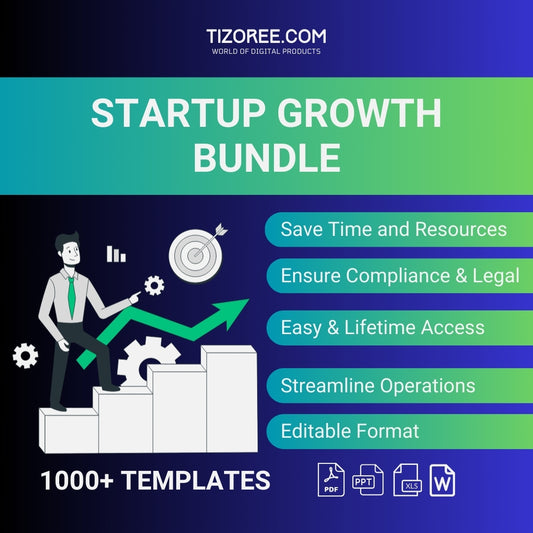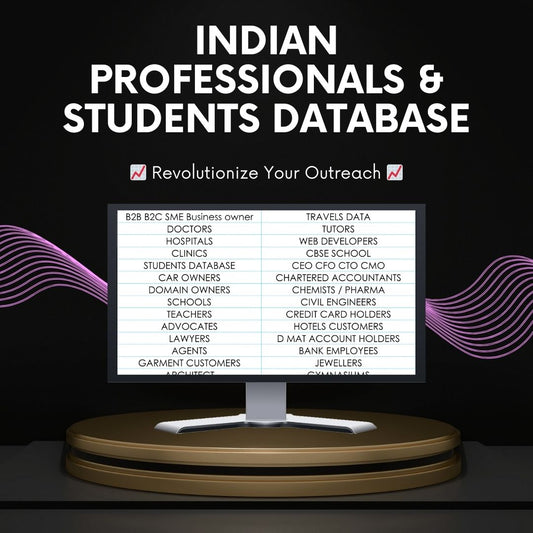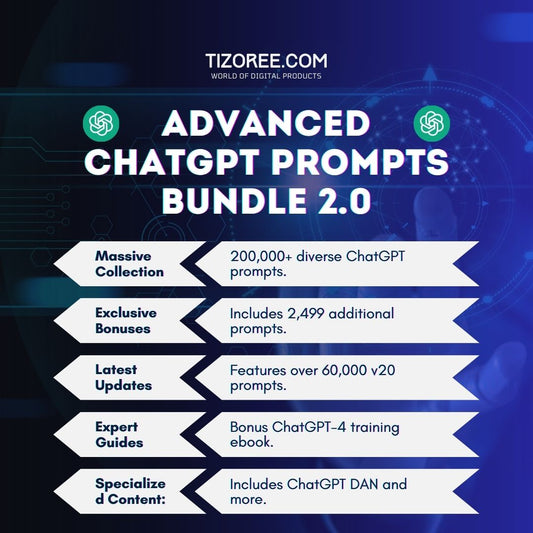திட்டவட்டமான SEO உடன் கரிம போக்குவரத்தை அளவிடுதல்: ஒரு நோ-கோட் அணுகுமுறை
பகிர்
டிஜிட்டல் மார்க்கெட்டிங் உலகில், எஸ்சிஓ ஒரு எண்கள் விளையாட்டு. கரிம போக்குவரத்தை மேம்படுத்த உள்ளடக்கத்தை மேம்படுத்துவதில் சவால் உள்ளது. ஃபெயிலரியின் கேஸ் ஸ்டடியைப் பயன்படுத்தி, புரோகிராமடிக் எஸ்சிஓவுக்கான குறியீடு இல்லாத அணுகுமுறை எப்படி உங்கள் உள்ளடக்க உத்தியை வியத்தகு முறையில் மேம்படுத்தலாம் மற்றும் உங்கள் இணையதளத்தின் பார்வையை அதிகரிக்கலாம் என்பதை இந்தப் பதிவு காட்டுகிறது.
வளர்ச்சிக்கான கட்டத்தை அமைத்தல்
2021 ஆம் ஆண்டின் முற்பகுதியில், ஃபெயிலரியின் நிறுவனர் ஒரு நாளைக்கு சுமார் 2,000 முதல் 5,000 பயனர்கள் வரை ஆர்கானிக் டிராஃபிக்கை வளர்ப்பதற்கான லட்சிய இலக்குகளை நிர்ணயித்தார். இந்த இலக்கு வெறும் எண் அல்ல; பிராண்டின் ஆன்லைன் இருப்பை மேம்படுத்துவதற்கான ஒரு பரந்த உத்தியின் ஒரு பகுதியாக இது இருந்தது. முதல் படி விரிவான முக்கிய ஆராய்ச்சியை உள்ளடக்கியது, இது தொடக்கம் தொடர்பான உள்ளடக்க யோசனைகளின் பட்டியலுக்கு வழிவகுத்தது, அவற்றின் மாதாந்திர தேடல் தொகுதிகள் மற்றும் முக்கிய வார்த்தைகளின் சிக்கல்களுடன் நிறைவுற்றது.
இந்தத் தரவை பகுப்பாய்வு செய்யும் போது, ஒரு பொதுவான தீம் வெளிப்பட்டது: தொடக்க பிட்ச் டெக்குகளை மையமாகக் கொண்ட கட்டுரைகள். இந்த உள்ளடக்க வகை நிரல் எஸ்சிஓ உத்திக்கு அடித்தளமாக இருக்கும்.
உள்ளடக்க யோசனைகளை சரிபார்க்கிறது
அடுத்த கட்டமாக உள்ளடக்க வகையைச் சரிபார்க்க வேண்டும். லீன் ஸ்டார்ட்அப் முறையைப் பயன்படுத்தி, பல்வேறு ஸ்டார்ட்அப் பிட்ச் டெக்குகளில் மூன்று எளிய கட்டுரைகள் உருவாக்கப்பட்டன. இதில் அடங்கும்:
- விண்டேஜ் ஸ்டார்ட்அப் பிட்ச் டெக்ஸ்
- உணவு மற்றும் பானங்கள் தொடக்க பிட்ச் தளங்கள்
- மீடியா ஸ்டார்ட்அப் பிட்ச் டெக்ஸ்
ஒரு மாதத்திற்குப் பிறகு, 2,000 இம்ப்ரெஷன்கள் மற்றும் பல கிளிக்குகளுடன் முடிவுகள் நம்பிக்கைக்குரியவை. இந்த சரிபார்ப்பு திட்டத்தை மேலும் அளவிடுவதற்கான கதவைத் திறந்தது.
உள்ளடக்க வகைகளை விரிவுபடுத்துகிறது
ஆரம்ப வெற்றியுடன், கூடுதல் உள்ளடக்க வகைகள் ஆராயப்பட்டன, அவை:
- கம்பெனி பிட்ச் டெக்ஸ் (எ.கா., Airbnb பிட்ச் டெக்)
- ஸ்டேஜ் பிட்ச் டெக்ஸ் (எ.கா., தொடர் ஒரு பிட்ச் டெக்)
- வாடிக்கையாளர் வகை பிட்ச் டெக்குகள் (எ.கா., பி2பி ஸ்டார்ட்அப் பிட்ச் டெக்ஸ்)
- பிசினஸ் மாடல் பிட்ச் டெக்ஸ் (எ.கா., சாஸ் ஸ்டார்ட்அப் பிட்ச் டெக்ஸ்)
மூன்று புதிய கட்டுரைகள் வெளியிடப்பட்டன, மேலும் முடிவுகள் எதிர்பார்ப்புகளை மீறி, திட்டத்தை விரிவுபடுத்துவதற்கான முடிவை உறுதிப்படுத்தியது.
நிரல் எஸ்சிஓவை செயல்படுத்துதல்
இந்த உள்ளடக்க வகையை திறம்பட அளவிட, நான்கு-படி செயல்முறை நிறுவப்பட்டது:
- சேகரிப்பு: தொழில், நிலை, வாடிக்கையாளர் வகை மற்றும் வணிக மாதிரி போன்ற தொடக்கத் தகவல் உட்பட பிட்ச் டெக்குகளின் விரிவான தரவுத்தளத்தை உருவாக்கவும்.
- செறிவூட்டல்: ஒவ்வொரு தொடக்கம் மற்றும் அதன் பிட்ச் டெக் பற்றிய பயனுள்ள தகவலுடன் தரவுத்தளத்தை மேம்படுத்தவும்.
- தயாரிப்பு: தேவையான அனைத்து புலங்களும் சேர்க்கப்பட்டுள்ளதை உறுதிசெய்து, குறியீடு இல்லாத இயங்குதளத்தில் பதிவேற்றுவதற்குத் தரவைத் தயார்படுத்தவும்.
- உருவாக்கம்: தரவைப் பதிவேற்றி, கட்டுரை உருவாக்கும் செயல்முறையைத் தானியங்குபடுத்தவும்.
படி 1: சேகரிப்பு
ஸ்கிராப்பிங் கருவிகள் மற்றும் கையேடு ஆராய்ச்சி ஆகியவற்றின் கலவையைப் பயன்படுத்தி, குழு பிட்ச் டெக்குகளின் பரந்த தரவுத்தளத்தை சேகரித்தது. சிம்பிள் ஸ்கிராப்பர் போன்ற கருவிகள் பல்வேறு இணையதளங்களில் ஹோஸ்ட் செய்யப்பட்ட பிட்ச் டெக்குகளை சேகரிப்பதில் முக்கிய பங்கு வகித்தன. கூடுதல் ஆதாரங்களைக் கண்டறிய Google இல் கைமுறைத் தேடல்களும் நடத்தப்பட்டன.
படி 2: செறிவூட்டல்
தரவுத்தளத்தில் உள்ள ஒவ்வொரு உள்ளீடும் தொடர்புடைய விவரங்களுடன் செறிவூட்டப்பட்டது. ஒவ்வொரு தொடக்கத்திற்கும் வணிக மாதிரி மற்றும் வாடிக்கையாளர் வகையை அடையாளம் காண்பது இதில் அடங்கும். தொடக்க விளக்கங்களை மீண்டும் எழுத AI எழுதும் கருவிகள் பயன்படுத்தப்பட்டன, இது Google அபராதங்களைத் தவிர்க்க தனித்துவமான உள்ளடக்கத்தை உறுதி செய்கிறது.
படி 3: தயாரிப்பு
உள்ளடக்கத்தை உருவாக்கும் முன், தேவையான அனைத்து மெட்டாடேட்டாவும் தயாரிக்கப்பட்டது. ஒவ்வொரு பிட்ச் டெக் பக்கத்திற்கும் எஸ்சிஓ-நட்பு மெட்டா தலைப்புகள் மற்றும் விளக்கங்களை உருவாக்குவது இதில் அடங்கும், அவை தேடுபொறிகளுக்கு உகந்ததாக இருப்பதை உறுதி செய்கிறது.
படி 4: உருவாக்கம்
எல்லாவற்றிலும், மேஜிக் நடந்த Webflow போன்ற குறியீட்டு இல்லாத தளத்திற்கு தரவு பதிவேற்றப்பட்டது. சரியான தரவுப் புள்ளிகளை இணைப்பதன் மூலம், தனிப்பட்ட பிட்ச் டெக் பக்கங்கள் மற்றும் பட்டியல் கட்டுரைகள் தானாக உருவாக்கப்படுகின்றன.
முடிவுகள்
நிரலாக்க எஸ்சிஓ மூலோபாயம் இதை உருவாக்கியது:
- 352 தனிப்பட்ட பிட்ச் டெக் பக்கங்கள்
- 77 பட்டியல் கட்டுரைகள் பல்வேறு தொழில்கள் மற்றும் வணிக மாதிரிகள் மீது கவனம் செலுத்துகின்றன
மூன்று மாதங்களில், இந்தப் பக்கங்கள் ஒரு நாளைக்கு சராசரியாக 381 ஆர்கானிக் கிளிக்குகள் மற்றும் 600,000 இம்ப்ரெஷன்களைப் பெற்றன. இந்த ட்ராஃபிக் பல்வேறு பக்கங்கள் மற்றும் வினவல்களில் நன்கு விநியோகிக்கப்பட்டது, இது ஒரு வெற்றிகரமான SEO உத்தியைக் குறிக்கிறது.
நிரல் எஸ்சிஓவின் பரந்த பயன்பாடுகள்
ஃபெயிலரியின் வழக்கு உள்ளடக்கம்-கடுமையான வணிகங்களுக்கான நிரல் SEO இன் செயல்திறனை நிரூபிக்கிறது, இந்த உத்தி பல்வேறு தொழில்களில் பொருந்தும். உதாரணமாக:
- LiveChat: Shopify வணிக உரிமையாளர்களைக் குறிவைத்து, சிறந்த Shopify பயன்பாடுகளில் 300 க்கும் மேற்பட்ட கட்டுரைகள் உருவாக்கப்பட்டது.
- ஜாப்பியர்: கருவிகளுக்கு இடையே உள்ள இணைப்புகளைக் காண்பிக்கும் ஆயிரக்கணக்கான பக்கங்களை உருவாக்கியது, இலக்கு பயனர்களை ஈர்க்கிறது.
- நாடோடி பட்டியல்: டிஜிட்டல் நாடோடிகளை ஈர்க்கும் குறிப்பிட்ட குணாதிசயங்களைக் கொண்ட நகரங்களுக்கான பக்கங்கள் கட்டப்பட்டுள்ளன.
முடிவுரை
தேடுபொறிகளை மேம்படுத்தும் போது உள்ளடக்க உருவாக்கத்தை அளவிடுவதற்கு புரோகிராமடிக் எஸ்சிஓ ஒரு சக்திவாய்ந்த வழியை வழங்குகிறது. குறியீடு இல்லாத கருவிகள் மற்றும் கட்டமைக்கப்பட்ட அணுகுமுறையை மேம்படுத்துவதன் மூலம், வணிகங்கள் தங்கள் கரிம போக்குவரத்தை கணிசமாக மேம்படுத்தலாம் மற்றும் அவர்களின் இலக்கு பார்வையாளர்களை மிகவும் திறம்பட அடையலாம். நீங்கள் உள்ளடக்க மார்க்கெட்டிங் அல்லது வேறு துறையில் இருந்தாலும், ஒரு நிரல்சார்ந்த SEO உத்தியைப் பின்பற்றுவது உங்கள் ஆன்லைன் இருப்புக்கான கேம்-சேஞ்சராக இருக்கலாம்.
இதேபோன்ற உத்திகளைச் செயல்படுத்த விரும்புவோருக்கு, தரமான தரவைச் சேகரிப்பதில் கவனம் செலுத்துங்கள், அதை அர்த்தமுள்ளதாக வளப்படுத்துங்கள் மற்றும் ஆட்டோமேஷனுக்கான குறியீடு இல்லாத கருவிகளைப் பயன்படுத்துங்கள். வளர்ச்சிக்கான சாத்தியக்கூறுகள் கணிசமானவை, இங்கு பகிரப்பட்ட வெற்றிக் கதைகள் மூலம் நிரூபிக்கப்பட்டுள்ளது.
உங்கள் எஸ்சிஓ விளையாட்டை அடுத்த கட்டத்திற்கு கொண்டு செல்ல தயாரா? நிரலாக்க எஸ்சிஓவை ஆராய்ந்து, அது உங்கள் உள்ளடக்க உத்தியை எவ்வாறு மாற்றும் என்பதைப் பார்க்கவும்.



